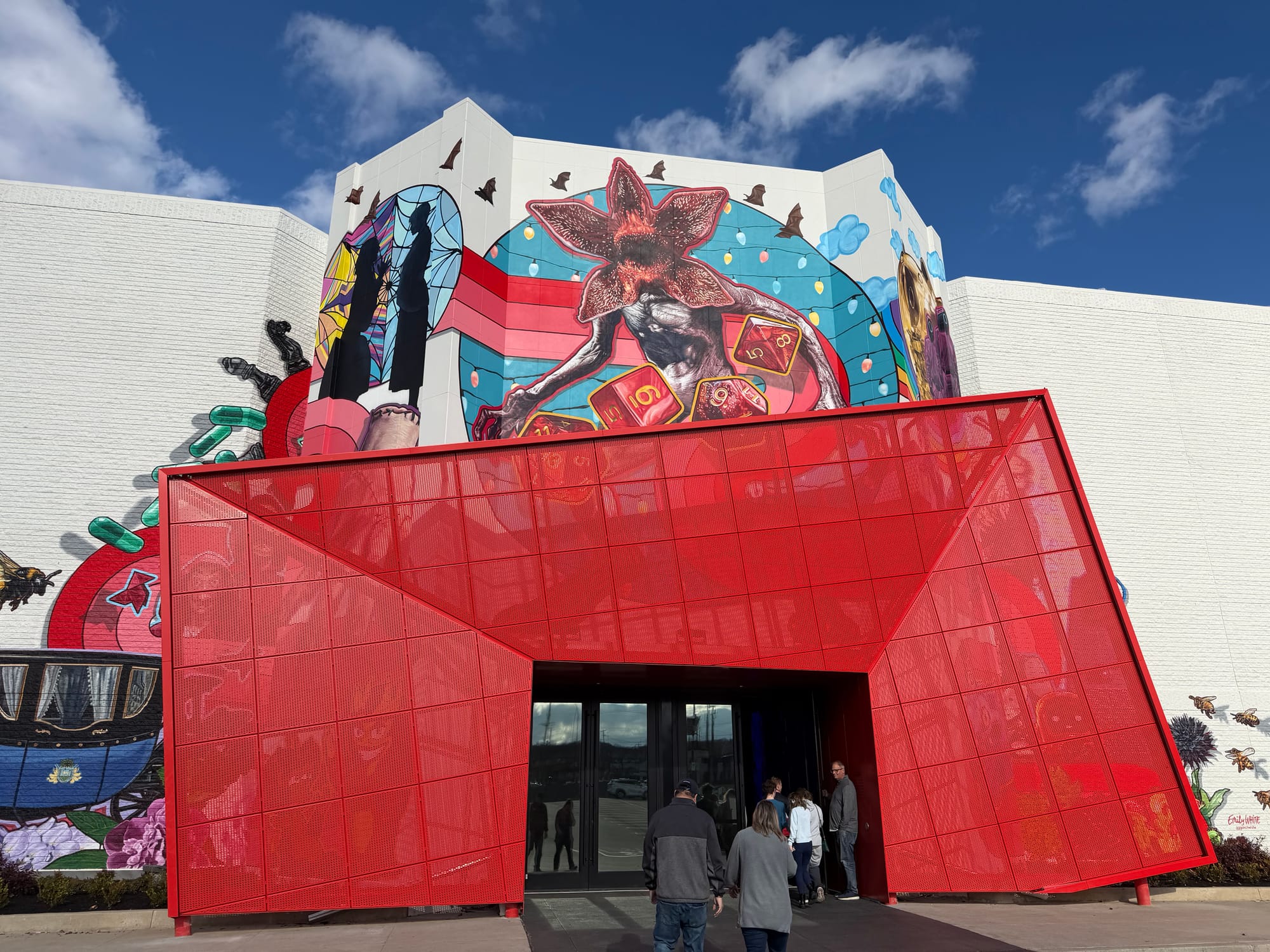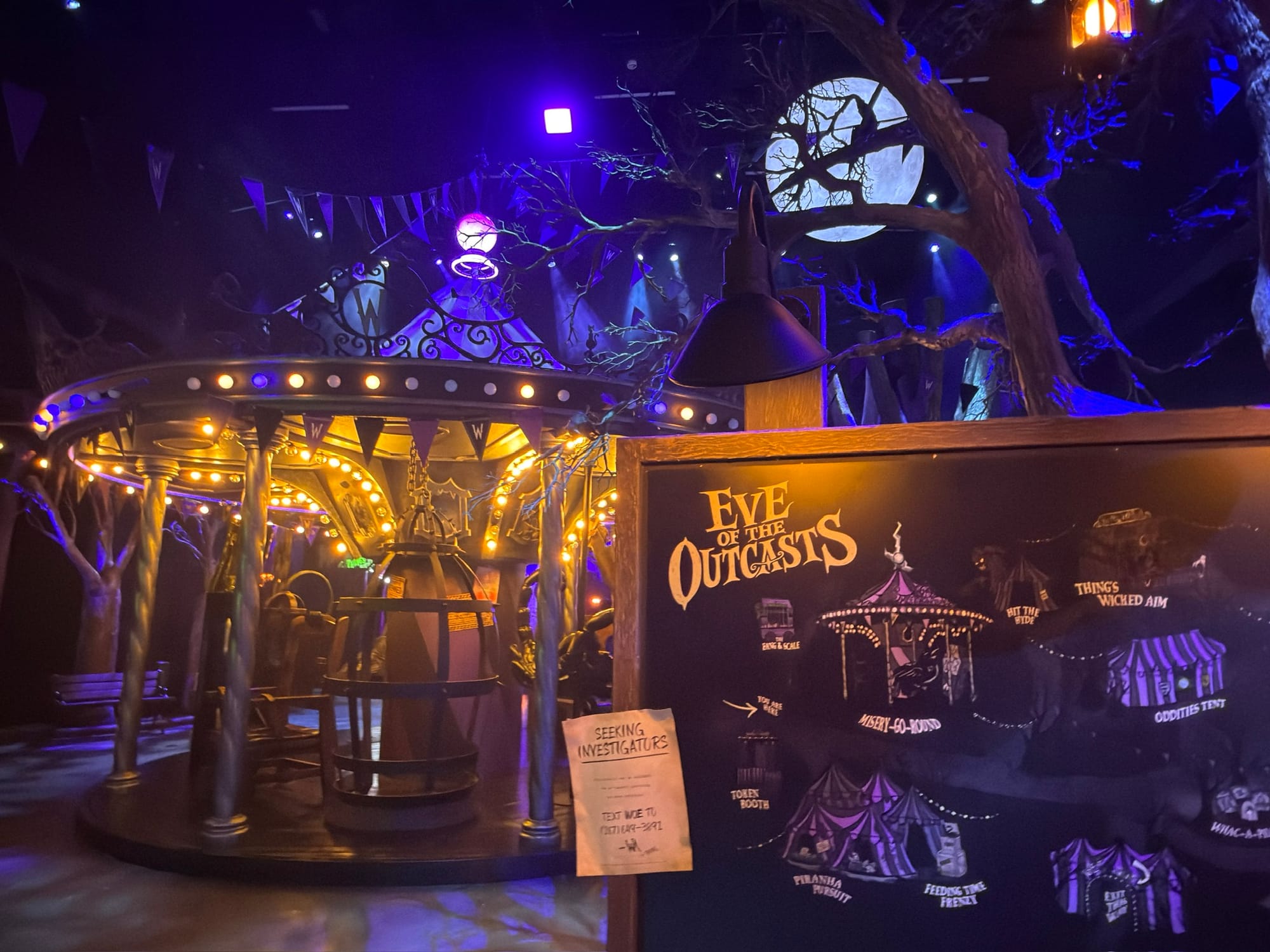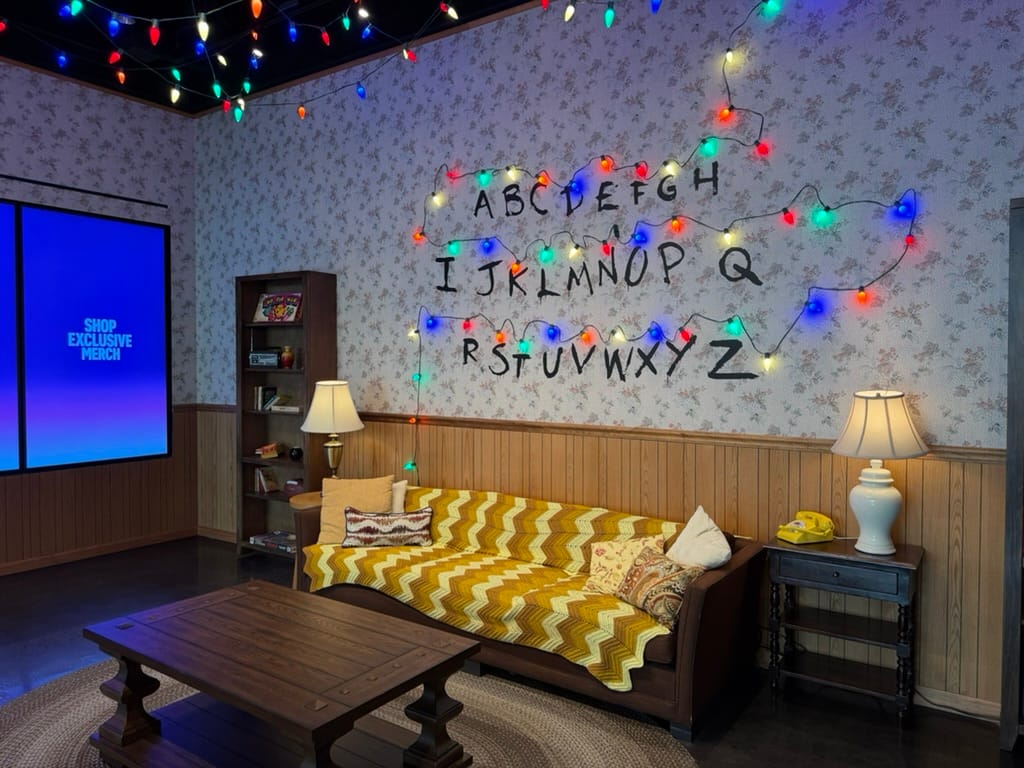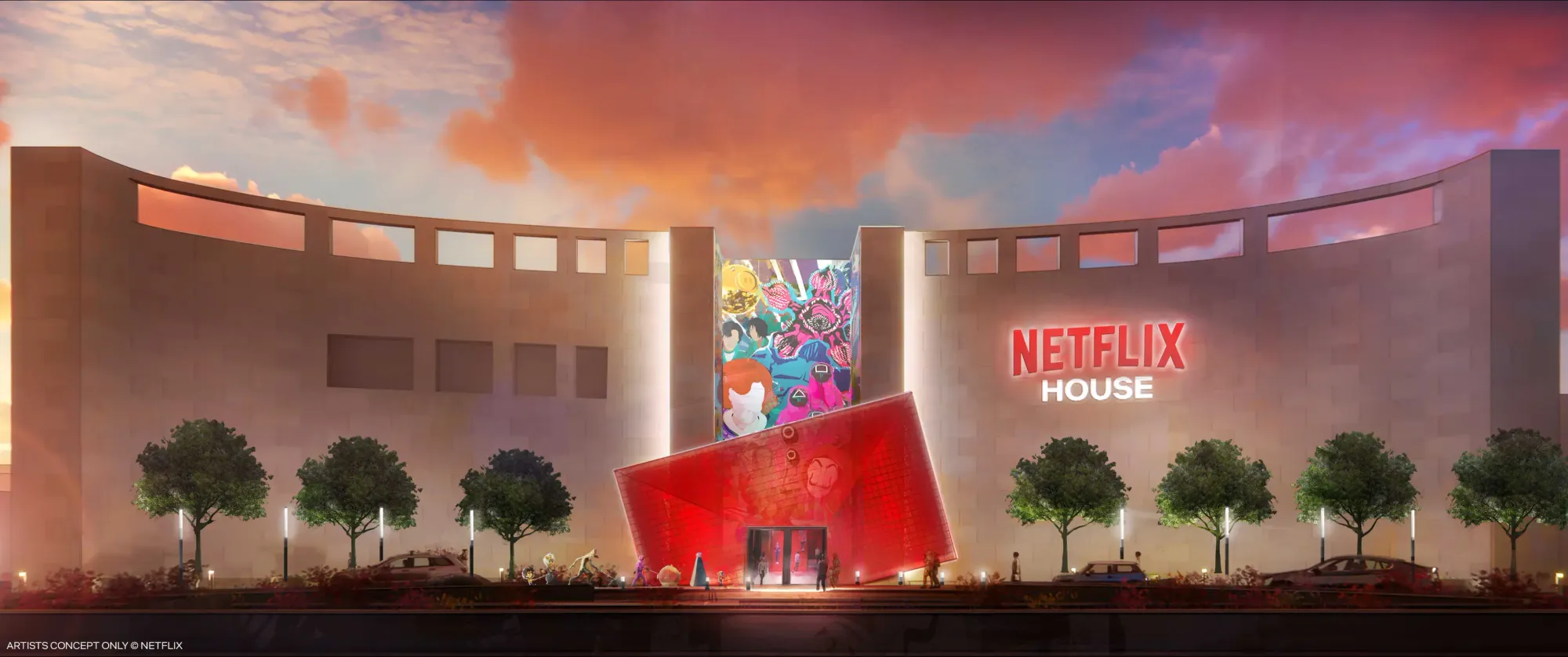Sandwiched between a Sunglass Hut and a men’s clothing store, visitors to the King of Prussia Mall outside Philadelphia can step into the first permanent embodiment of one of the largest global entertainment companies’ themed-entertainment ambitions. Netflix House represents the world’s largest streamer’s entry into the world of themed entertainment.
Not a theme park, not quite a DisneyQuest (anyone remember that one?), this facility is something new in the world of immersive, location-based experiences.
Netflix House combines retailtainment and themed dining with virtual-reality games, mini-golf, escape-room-like challenges, a movie theater, and self-guided immersive LARPing into a fully integrated package unlike anything else on the market.
With no admission fee and an à la carte pricing model, visitors can choose the experiences that intrigue them most without experiencing pocketbook-induced FOMO. It’s clear that Netflix does not expect—nor even intend—for visitors to partake in every experience in one visit. The ticket-purchasing experience reflects this, as the website doesn’t even allow users to add more than one primary experience (like Wednesday: Eve of the Outcasts) and one secondary experience (such as mini-golf) in a single transaction.
During my visit I was able to experience both headlining attractions—Wednesday: Eve of the Outcasts and One Piece: Quest for the Devil Fruit—play a round of Top 9 mini-golf, browse the retail store, and dine at the restaurant, Netflix Bites. I was unfortunately unable to experience the virtual-reality offering, Virtuals.

Upon entering on the ground level via the parking lot and walking through a giant representation of the red envelope that Netflix used to mail DVDs in, I was immediately enveloped in a world of upbeat pop music (Taylor Swift was in heavy rotation) and neon signs representing various Netflix franchises. It’s on this level that you’ll find the two primary experiences, which employees indicated to me would be rotated with new offerings at least every nine months. Up the stairs on the second level, visitors will find the large gift shop that sells merchandise from the hottest Netflix shows and movies of the moment (there was a large K-Pop Demon Hunters section), the mini-golf (with its nine holes themed around Netflix IP), and the virtual-reality pods. Finally, at the back of the venue, with an opening into the King of Prussia Mall, is the restaurant.

I was impressed by the quality of the offerings at Netflix Bites, all of which are themed to various Netflix favorites, and thought that it would be one of my top choices for mall dining if I lived in the area (although, to be perfectly honest, the mall’s Eataly location would probably win out most days).
The headlining experiences vary widely in quality, with Wednesday surprising me in both the quality of its theming as well as the mechanics of the gameplay. One Piece was a different story. I did not enjoy my pirate adventure there; the escape-room elements are designed to be comically easy—which isn’t necessarily a bad thing, as this experience was likely designed with families in mind—but the theming and media elements do not do enough to make up for the experience’s shortcomings.

Both of these experiences are modular, and the business model of Netflix House is predicated on the idea that they will quickly stand up multiple venues (the next venue will open next month in Dallas, Texas) that will swap attractions. Netflix has indicated that they envision a Netflix House in nearly every major city, so as they bring more venues online, the lifespan of the experiences goes up and the cost of producing them is spread out over multiple venues and a longer timetable.
The problem with this (actually there are many problems, but for brevity’s sake, let’s just look at this one) is the same reason why any Netflix theme park would also struggle: the shelf life of Netflix movies and shows. The nature of Netflix’s business model for streaming has resulted in content that quickly gets really hot and then is forgotten about in a few months.
Can you honestly name that many Netflix movies that were hits five years ago and are still just as popular and beloved today? I’d bet you can maybe name only two or three. This means it’s difficult to expect that modular experiences based on any given flash-in-the-pan hit will remain relevant after more than a handful of nine-month cycles.

One way Netflix seems to be trying to mitigate this issue is by designing experiences to be evergreen within the world of the show or movie they’re based on. Rather than putting visitors into a particular episode or season of One Piece or Wednesday, they’ve created new stories in those worlds for you to inhabit. Time will tell if this extends their shelf life.
For now, Netflix House is riding high with massive crowds. We’ll see if Netflix remains committed to the historically tough world of LBEs as the months roll on and the once-shiny-and-new venue becomes just another thing to do at the mall. Who knows? Maybe they’ll be able to succeed where many have failed and implement a continuous cadence of new experiences every few months to keep visitors coming back. Only time will tell.


